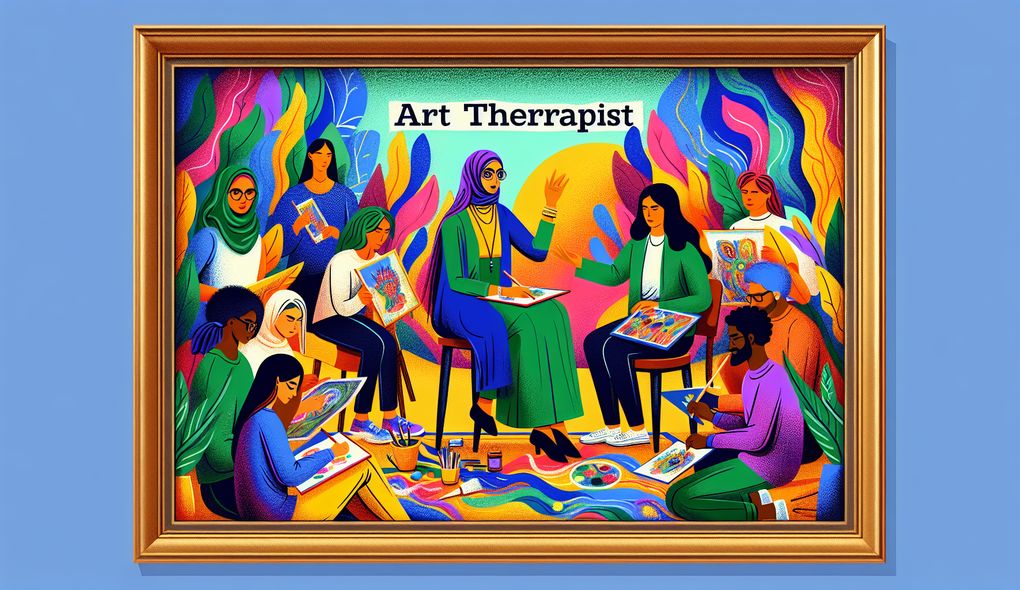Give an example of a time when you used critical thinking and problem-solving abilities in your role as an art therapist.
SENIOR LEVEL

Sample answer to the question:
One example of a time when I used critical thinking and problem-solving abilities in my role as an art therapist was when I had a client who was struggling with anger management. During our sessions, I noticed that the client responded well to expressing their emotions through abstract painting. To address their anger, I designed a specialized art therapy intervention focused on exploring emotions and finding healthy coping mechanisms. We created a series of paintings that represented the client's anger and transformed them into more positive emotions. Through this process, the client gained insight into their anger triggers and developed strategies to manage their emotions in a healthier way.
Here is a more solid answer:
In my role as an art therapist, I frequently utilize critical thinking and problem-solving abilities to tailor treatment plans to each client's unique needs. One example that stands out is a case where I was working with a client who struggled with social anxiety. After assessing the client's strengths and interests, I designed an art therapy intervention that involved creating personal affirmation cards. These cards served as visual reminders of the client's positive qualities and helped them build self-confidence in social situations. Additionally, I incorporated role-playing exercises to practice social interactions and developed a gradual exposure plan to gradually increase the client's comfort level. Through this holistic approach, the client was able to overcome their social anxiety and develop healthier coping strategies.
Why is this a more solid answer?
The solid answer provides a more detailed example of how the candidate used critical thinking and problem-solving abilities in their role as an art therapist. It includes specific details about the client's issue, the actions taken by the candidate, and the outcomes achieved. However, it could still be improved by providing more specific information about the candidate's critical thinking process and the challenges they faced.
An example of a exceptional answer:
As an art therapist, critical thinking and problem-solving abilities are integral to my practice. One particularly challenging case involved a client with complex trauma who struggled to verbalize their experiences. To address this, I employed a variety of creative techniques, such as guided visualization, collage-making, and clay sculpting. By utilizing critical thinking, I identified the most suitable mediums to facilitate emotional expression and provide a safe outlet for the client. Additionally, I collaborated with a trauma-informed team to develop a comprehensive treatment plan that incorporated multi-modal interventions. This approach allowed the client to process and integrate their traumatic experiences in a holistic and empowering way, leading to significant improvements in their overall well-being.
Why is this an exceptional answer?
The exceptional answer provides a highly detailed and comprehensive example of how the candidate used critical thinking and problem-solving abilities in their role as an art therapist. It demonstrates the candidate's expertise in their field, as well as their ability to collaborate with a team and adapt their approach to meet the specific needs of a challenging client. The answer showcases the candidate's innovative thinking and the significant impact their interventions had on the client's well-being.
How to prepare for this question:
- Reflect on specific cases or situations where you utilized critical thinking and problem-solving abilities in your role as an art therapist. Think about the challenges you faced, the actions you took, and the outcomes achieved.
- Be prepared to provide specific details when discussing your example. Talk about the client's issue, the creative techniques or interventions you used, and the results you observed.
- Highlight your ability to collaborate with other professionals and integrate art therapy into a holistic treatment approach. Discuss how you used critical thinking to assess the client's needs and develop an individualized treatment plan.
- Stay up-to-date with current research and best practices in the field of art therapy. This will demonstrate your commitment to continuous learning and professional development.
- Practice articulating your critical thinking process and problem-solving abilities. Work on communicating how you analyze complex situations, identify creative solutions, and evaluate the effectiveness of your interventions.
What are interviewers evaluating with this question?
- Critical thinking
- Problem-solving abilities

